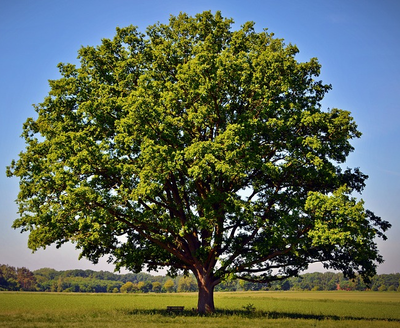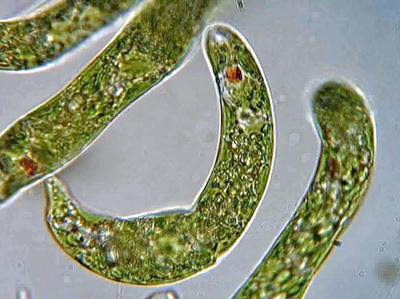MRS GREN
Contents
Key Stage 2
Meaning
MRS GREN is a memory tool to help remember what makes something alive.
MRS GREN
If something is alive it must be able to:
- Move - To change direction.
- Respire - Get energy from food.
- Sense - To be able to respond to changes in the environment.
- Grow - To get bigger.
- Reproduce - To make copies of itself.
- Excrete - To get rid of waste products.
- Nutrition - To take in new materials for growth and repair.
Examples
|
|
Key Stage 3
Meaning
MRS GREN is an acronym used to help remember the criteria for something to be considered alive.
About MRS GREN
MRS GREN stands for:
- Movement - All living creatures can change direction when moving.
- Respiration - All living creatures can get energy from food.
- Sensitivity - All living creatures can respond to changes in the environment.
- Growth - All living creatures can get bigger by taking on new material.
- Reproduction - All living creatures can make copies of themselves.
- Excretion - All living creatures can get rid of waste materials.
- Nutrition - All living creatures can take on new materials for movement, growth and repair.
Examples
|
The picture shows a micro-organism called a Euglena.
|
This picture shows many muscle cells.
|
Beyond the Curriculum
Unveiling the Complexity of Life
While you've learned about the essential criteria for something to be considered alive with "MRS GREN," there's much more to discover:
Cell Diversity
- Cells are the building blocks of life, and they come in diverse forms. Beyond the basics, you'll explore specialized cells like nerve cells, muscle cells, and even stem cells. Nerve cells transmit electrical signals, allowing you to think and move. Muscle cells contract, enabling you to perform physical activities. Stem cells have the incredible ability to become any cell in the body, opening doors to regenerative medicine and tissue engineering.
The Mysteries of Consciousness
- What makes you conscious and aware of your surroundings? The study of consciousness delves into the mysteries of the mind. Scientists are exploring how the brain processes information, generates thoughts, and forms emotions. Understanding consciousness is at the forefront of neuroscience and psychology, and it's a topic that sparks philosophical debates.
Extremophiles: Life in Extreme Conditions
Beyond the classroom, you'll encounter organisms that defy expectations:
Extremophiles: Life's Survivors
- Extremophiles are organisms that thrive in extreme environments, from acidic hot springs to deep-sea hydrothermal vents. These resilient creatures challenge our understanding of where life can exist and inspire astrobiology, the study of life beyond Earth. Scientists are investigating whether extremophiles could provide clues about the potential for life on other planets.
The Microbial Universe
- Microbes are tiny organisms that play crucial roles in our world. Beyond the basics, you'll discover the microbial universe. Microbes not only impact our health but also shape ecosystems and the environment. Researchers are uncovering the hidden power of microbes in fields like biotechnology, bioengineering, and environmental science.
The Quest for Extraterrestrial Life
As you delve deeper into science, you'll encounter one of the most profound questions:
Are We Alone in the Universe?
- The search for extraterrestrial life is a captivating field. Scientists are exploring distant planets and moons, looking for signs of life beyond Earth. This quest includes missions to Mars, the study of icy moons like Europa, and the search for exoplanets in habitable zones. Discovering life elsewhere in the universe could redefine our understanding of biology and existence.
These topics represent the exciting and ever-expanding world of life sciences. As you progress in your scientific journey, you may find yourself exploring these fascinating concepts and contributing to the frontiers of scientific research.
The Ongoing Debate in Biology
The classification of what is considered "alive" is a topic of continuous debate and exploration in the field of biology. While "MRS GREN" provides a helpful mnemonic for identifying living organisms, the boundaries between living and non-living entities can be blurry, and scientists continue to grapple with complex questions:
Viruses: Living or Non-Living?
- Viruses are a prime example of the ambiguity in classifying life. They contain genetic material like DNA or RNA, similar to living organisms, but they cannot perform the essential life functions independently. Viruses must infect a host cell to replicate and carry out their life cycle. This unique nature places them on the edge of the living world, leading to debates about whether they should be considered alive.
Prions and Viroids
- Prions and viroids are infectious agents composed solely of protein (prions) or RNA (viroids). They lack the traditional cellular structure found in living organisms yet can have profound effects on living organisms. Prions are implicated in diseases like Creutzfeldt-Jakob disease in humans, and viroids can cause plant diseases. Their classification challenges the conventional definition of life.
Synthetic Biology and Artificial Life
- With advances in synthetic biology, scientists can create artificial life forms with synthetic DNA. These synthetic organisms can carry out basic functions such as reproduction and metabolism. The question arises: are these synthetic life forms truly alive, or are they merely engineered constructs? This emerging field sparks philosophical and ethical debates about the nature of life.
The Search for Alternative Life Forms
- As scientists explore extreme environments on Earth, they discover microorganisms that push the boundaries of what life can be. Some extremophiles thrive in conditions once thought to be uninhabitable. This prompts the question: could life exist in radically different forms on other planets or moons? The quest for alternative life forms challenges our preconceptions.
The ongoing debate in biology about what defines life underscores the dynamic nature of scientific inquiry. It reminds us that our understanding of the living world is continually evolving, and as we explore new frontiers in biology, we may encounter life forms and phenomena that defy our current definitions and classifications.



